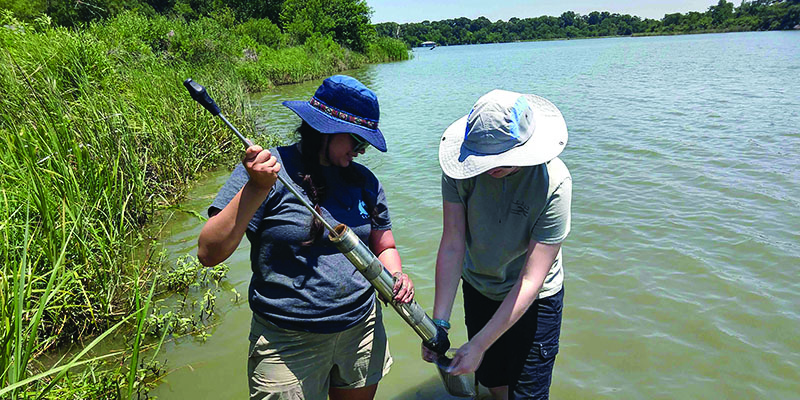Emily Macias has always known she wanted to work in the wild. Since she was a kid, she dreamed of spending her days as a marine biologist, zoologist, or even a veterinarian. But it wasn’t until she came to Lee College that she discovered how to make her dream of working with wildlife a reality.
After high school, Macias enrolled at Lee College in hopes of later transferring to a university as a marine biology major. Little did she know that her experiences at Lee College were just the beginning of a fascinating career path in environmental science.
Jim Dobberstine, environmental science faculty member at Lee College, was one of the instructors and mentors who helped Macias discover a love for environmental science and set her future in motion.
“[Jim] took us on field trips to places like the eco center and Armand Bayou Nature Center, and brought in guest speakers to lecture us on what they do with their careers,” Macias recalls. “The guest speakers and field trips were eye-openers for me, and I battled for a moment with what I wanted my career choice to be.”
That summer, Macias volunteered for the Living Shorelines Project lead by Dobberstine. An ongoing team effort between Lee College, University of Houston-Clear Lake (UHCL) and the Galveston Bay Foundation, the Living Shorelines Project offers students first-hand experience in field research and lab work.
“I learned many things from that project, but most importantly, I decided to continue my career in environmental science,” said Macias.
The Living Shorelines Project aims to understand various shoreline erosional trends and how they affect plant and marine life throughout the Bay Area. The data is then used to compare unrestored natural marsh sites and traditionally armored sites near each project. Students from Lee College, in collaboration with students at UHCL, work alongside professionals in the respective fields from Lee College, UHCL, Galveston Bay Foundation, Texas Parks and Wildlife, and others.
“Often times, these students are in a transfer pipeline, so getting them involved on this level gives them not only research credentials at the freshman and sophomore level, which is very unusual, but it also provides them an opportunity to matriculate with upper-level students,” said Dobberstine.
In fact, it’s not uncommon for students to start working on a project such as Living Shorelines, and a few years later, they naturally transition to a leadership role within the program as part of the partnerships developed under the program.
“I look at these things as career development, so the longer they are in it and the more different layers, the better,” said Dobberstine. “They are prepared for whatever career direction they’re going in or academic direction, in some instances where they’re going to grad school. It gives them that type of preparation on several different levels.”
A stellar example of the program’s success, Macias received an associate degree in environmental science from Lee College, then transferred to UHCL where she is currently majoring in environmental science and specializing in chemistry. She continues to work at Lee College as a lab tech in the environmental science and chemistry labs, and serves as a leader and mentor to students active in environmental science field research projects.

